How to delete Mail storage on Mac (attachments, messages, and more)
- Check Mail storage before deleting.
Mail storage includes attachments, cached files, messages, and system data. Use Apple menu > System Settings > General > Storage to see how much space Mail occupies. - Delete attachments from individual emails.
In the Mail app, select a message and go to Message > Remove Attachments to free up space while keeping the message intact. - Manually clear Mail downloads via Finder.
Navigate to ~/Library/Mail/ and locate the Attachments folders. You can review or bulk-delete files, but back up important data first with Get Backup Pro or iBoysoft Data Recovery. - Use tools for safer bulk cleanup.
Apps like Spark Mail or CleanMyMac allow you to remove large or old attachments efficiently without manually digging through system folders. CleanMyMac even lets you delete all Mail attachments in one click. - Control attachment downloads and manage the inbox.
Adjust Mail settings to download attachments selectively and unsubscribe from unwanted newsletters with apps like Leave Me Alone to prevent future storage issues. - Setapp solution for effortless Mac maintenance.
CleanMyMac, Get Backup Pro, iBoysoft Data Recovery, Spark Mail, Leave Me Alone, and 260+ apps are available on Setapp to help you manage Mail storage and other Mac tasks efficiently. Try them free for seven days.
Email is part of our everyday routine, and with newsletters, updates, and attachments arriving nonstop, your inbox can quietly take up far more space on your Mac than you expect. And it’s not just attachments — Mail storage also includes cached files, old messages, and system data that build up over time.
If you’re wondering how to delete Mail storage on Mac, my guide walks you through the most effective ways to clear attachments, Mail downloads, message data, and app settings so you can reclaim space and keep your Mac running smoothly.
If you’re having trouble with other apps as well, give the Fix My Mac GPT assistant a try to help troubleshoot any Mac issues you might be facing.
How to check mail storage on Mac
Before you start deleting anything, it helps to see how much space Mail is actually using. Mail storage on macOS includes more than attachments. It also covers message files, cached data, and system-generated items that build up over time.
Here’s how to check it:
Open the Apple menu and choose System Settings.
Click General > Storage.
Scroll down the list of categories and find Mail. Here, you’ll see how much space Mail is taking up in total.
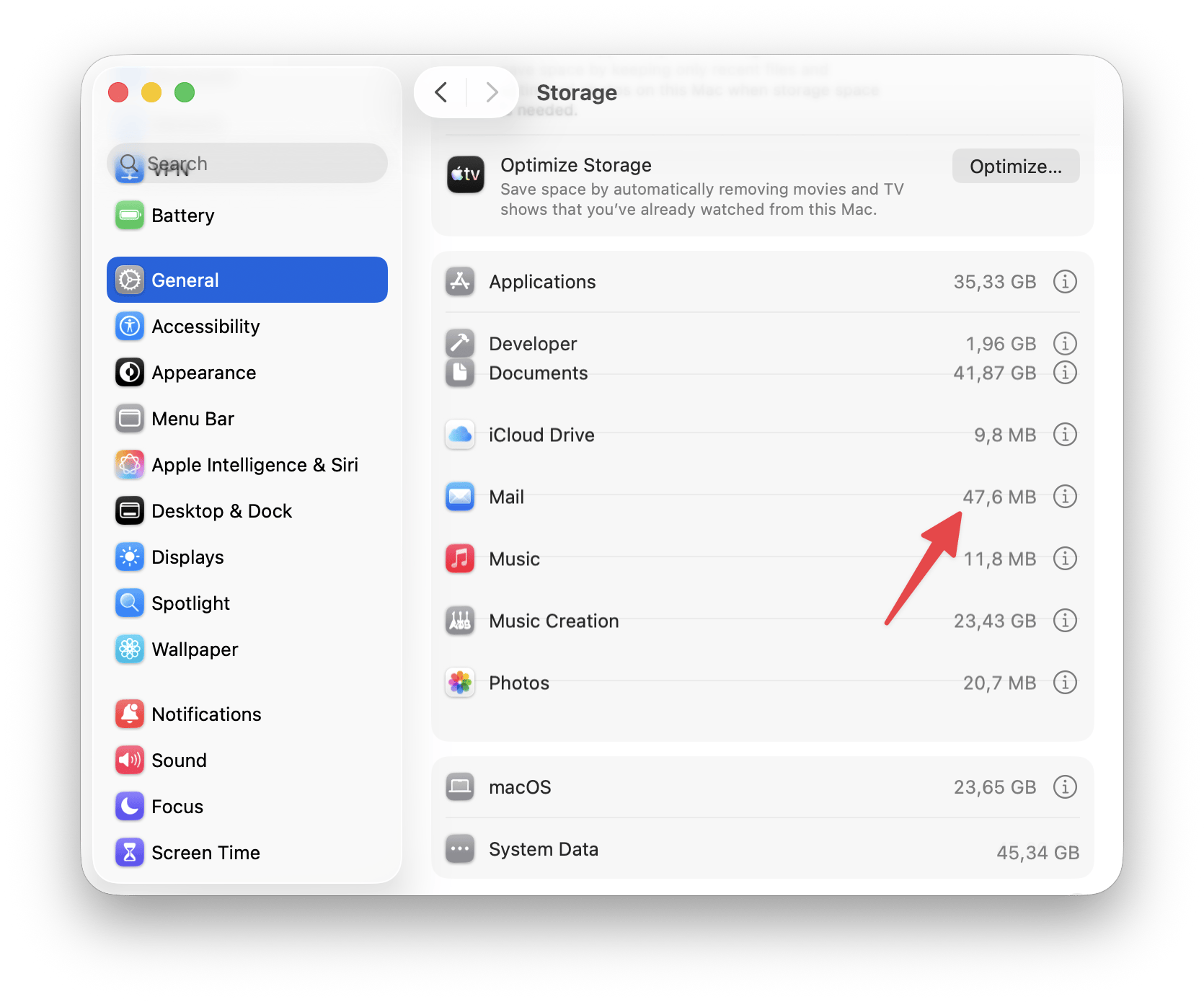
This gives you a clear overview of Mail’s full footprint so you can decide how to delete Mail storage on Mac more effectively.
Download issues aren’t limited to Mail on your Mac; if you’re also struggling with apps on mobile, check out our guide on what to do if your iPhone won’t download apps.
How to find and delete Mail downloads on Mac
Mail attachments can take up a surprising amount of space, even if you never save them manually. Many email clients automatically store attachments in hidden system folders, which means clearing your Downloads folder won’t fully reduce Mail storage.
Here’s how to delete Mail downloads on Mac and recover meaningful space:
Option 1: Remove attachments from individual emails in Apple Mail
To do so:
Open the Mail app.
Select a message.
Go to Message in the menu bar > Remove Attachments.
If the option is active, Mail will delete all attachments from that email while keeping the message itself.
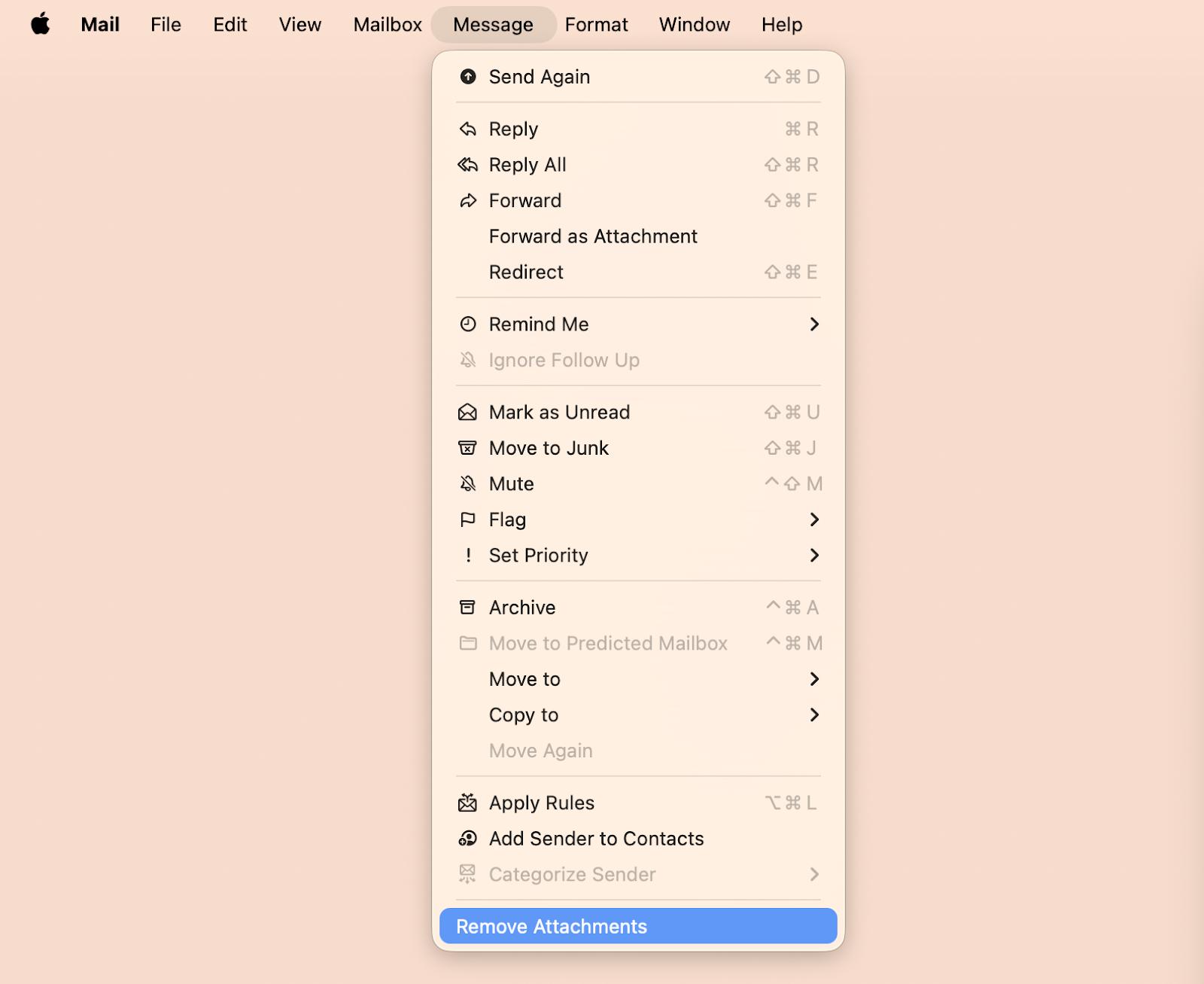
This is quick, but it only works one message at a time.
Option 2: Manually delete Mail attachments via Finder
To manually delete attachments:
Open Finder.
Click Go in the menu bar > Go to Folder.
Type: ~/Library > Press Return.
Open the Mail folder.
In the search bar, type attachments.
Change the search scope to Mail.
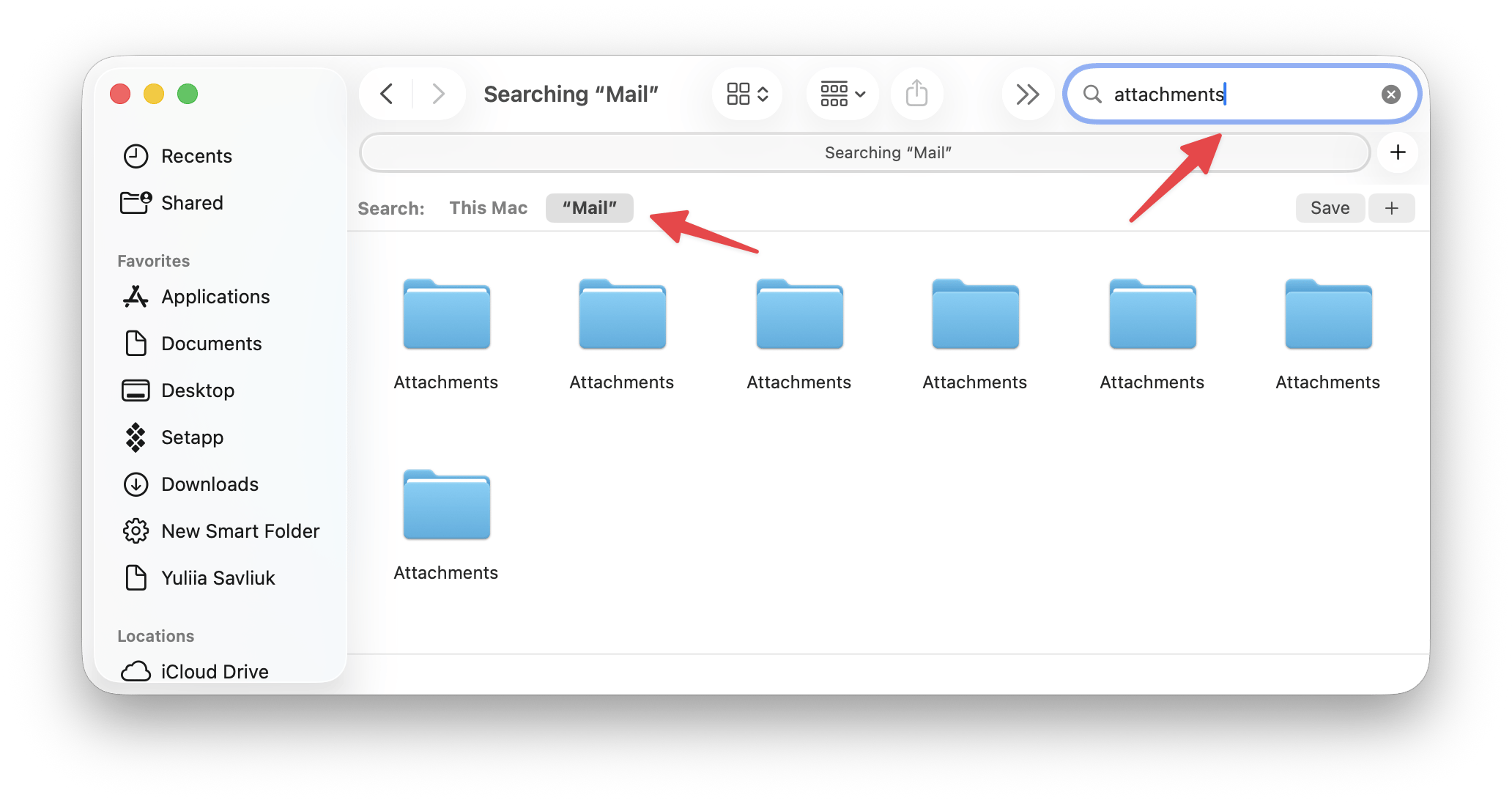
You’ll see one or several Attachments folders. You can review or bulk-delete their contents to reclaim space.
Option 3: Bulk-remove large or old attachments using Spark Mail
If you want a safer and more guided cleanup (without digging through system folders), Spark Mail helps you filter and remove attachments in just a few clicks:
Install and open Spark Mail.
Type Attachments in the search field to view all emails with files attached.
Sort by size or date to find the biggest storage hogs.
Delete or archive messages in bulk — Spark removes the attachments along with them.
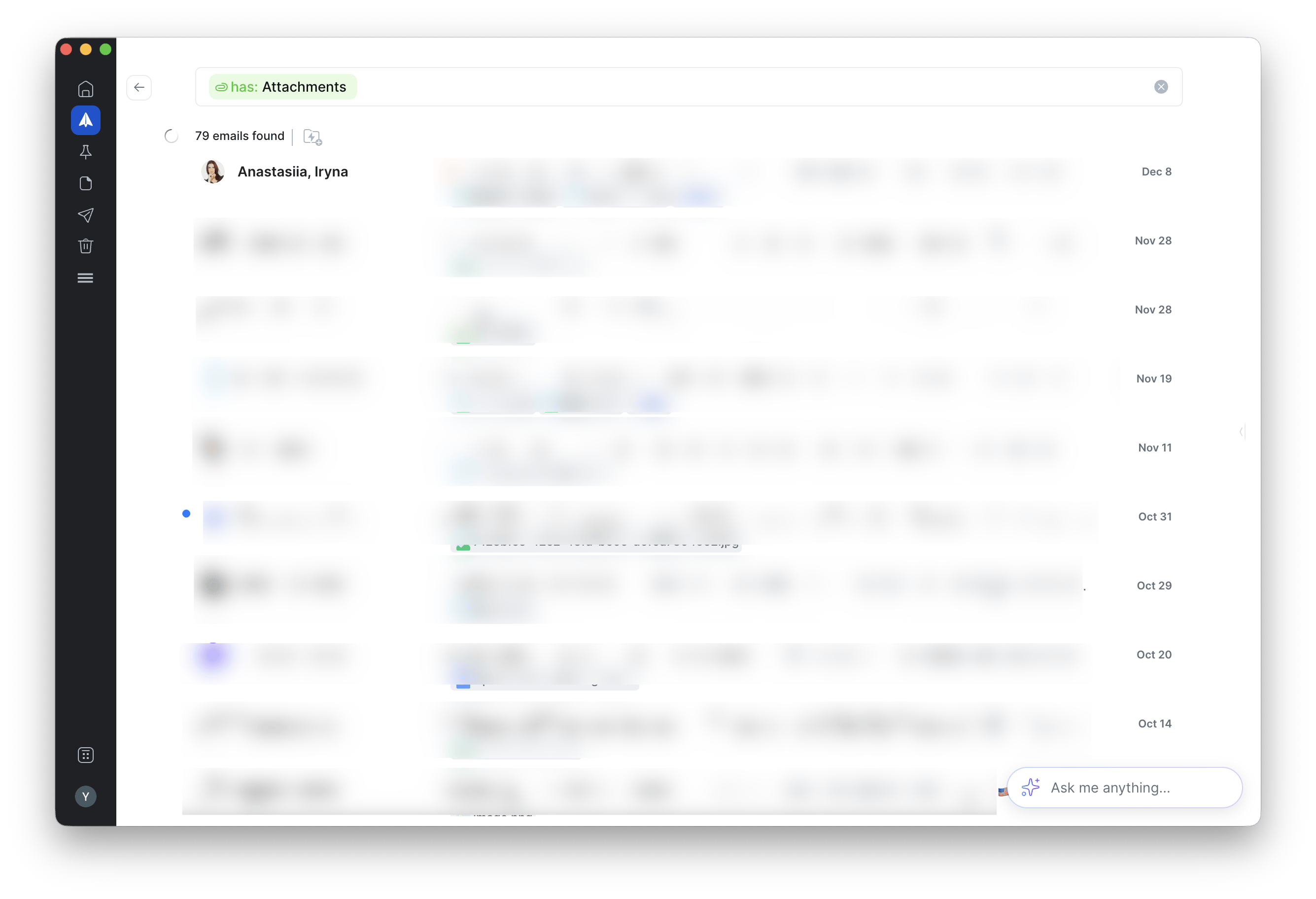
Spark also gives you a clear visual overview of attachment-heavy threads, making cleanup faster and less risky than manual Finder deletion.
Option 4: Removing attachments from Mail with one click
If digging through Library folders isn’t your thing, there’s an easier (and much safer) way to clear Mail attachments in bulk.
CleanMyMac includes a dedicated Mail Attachments module that scans your Mac for all locally stored Mail downloads and cached files. It finds everything in one place, so you don’t have to hunt through hidden system folders.
Here’s how to delete Mail storage on Mac using CleanMyMac:
Install and open CleanMyMac.
Click the Cleanup module > Scan.
Click Review All Junk > Mail Attachments.
Remove all local copies of email attachments.
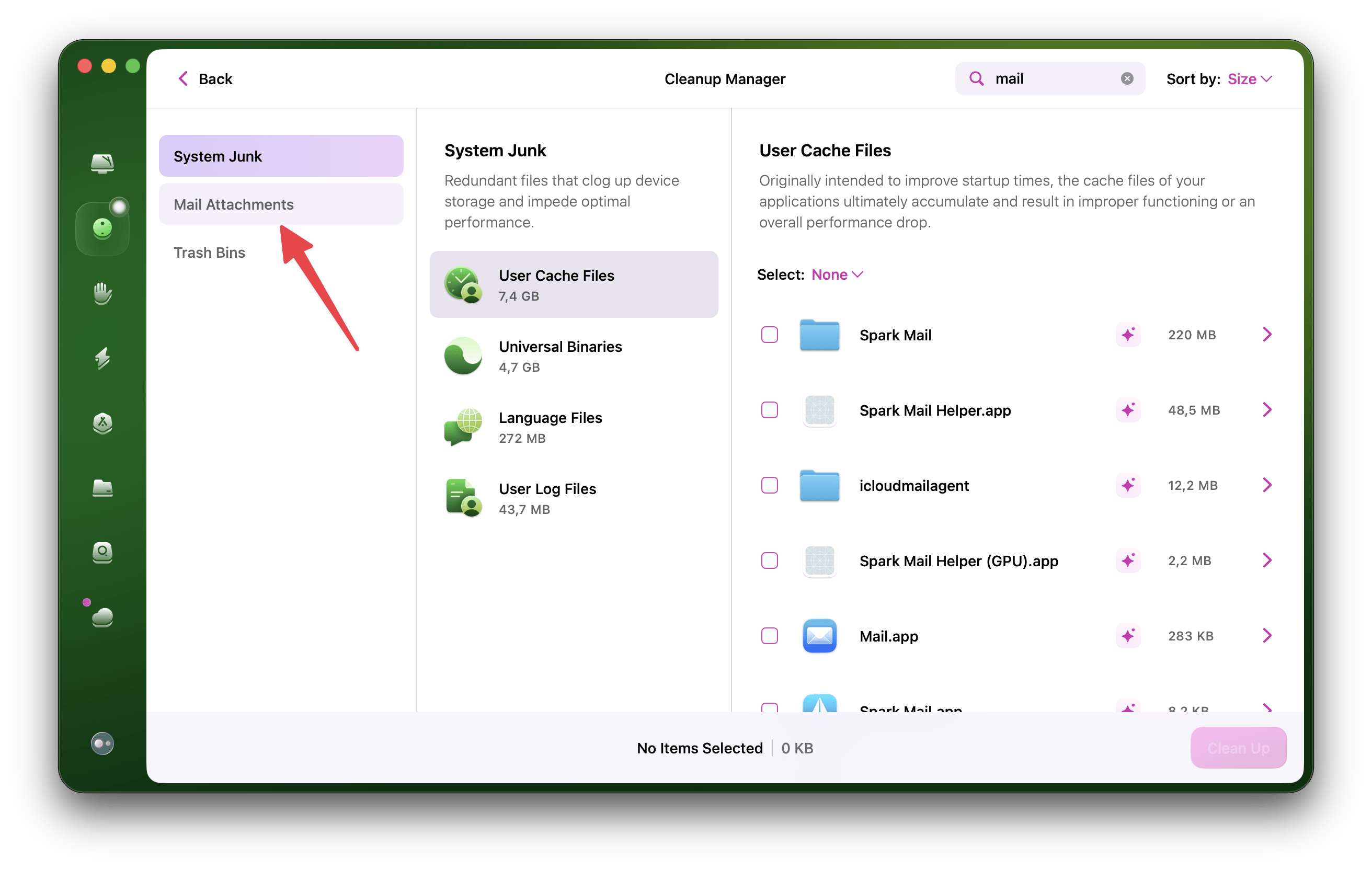
This one-click cleanup removes gigabytes of unnecessary Mail data while keeping your messages intact — perfect if you want fast results without manual digging.
Read also:
How to delete Mail attachments in Messages
Unlike Mail, Messages allows you to actually delete attachments. Here’s how to do that.
This is the safest, most user-friendly method:
Open the Messages app and select the conversation.
Click the i (info) button in the top-right of the conversation window.
Scroll to the Photos and Files / Attachments area.
Right-click (or Control-click) an attachment and choose Delete, or select several items (click while holding Command) and press Delete.
Confirm when prompted.
Changing Mail’s attachment settings
In the Mail app, you can control whether attachments are downloaded automatically, only when needed, or not at all. This is helpful if you’re trying to save space, especially on a Mac with limited storage. Or if you prefer having everything downloaded for offline access.
To adjust this setting on modern macOS versions:
Open the Mail app.
In the top menu, go to Mail > Settings.
Click the Accounts tab.
Choose the email account you want to manage from the left-hand list.
Find Download Attachments and select one of the options:
All
Recent
None
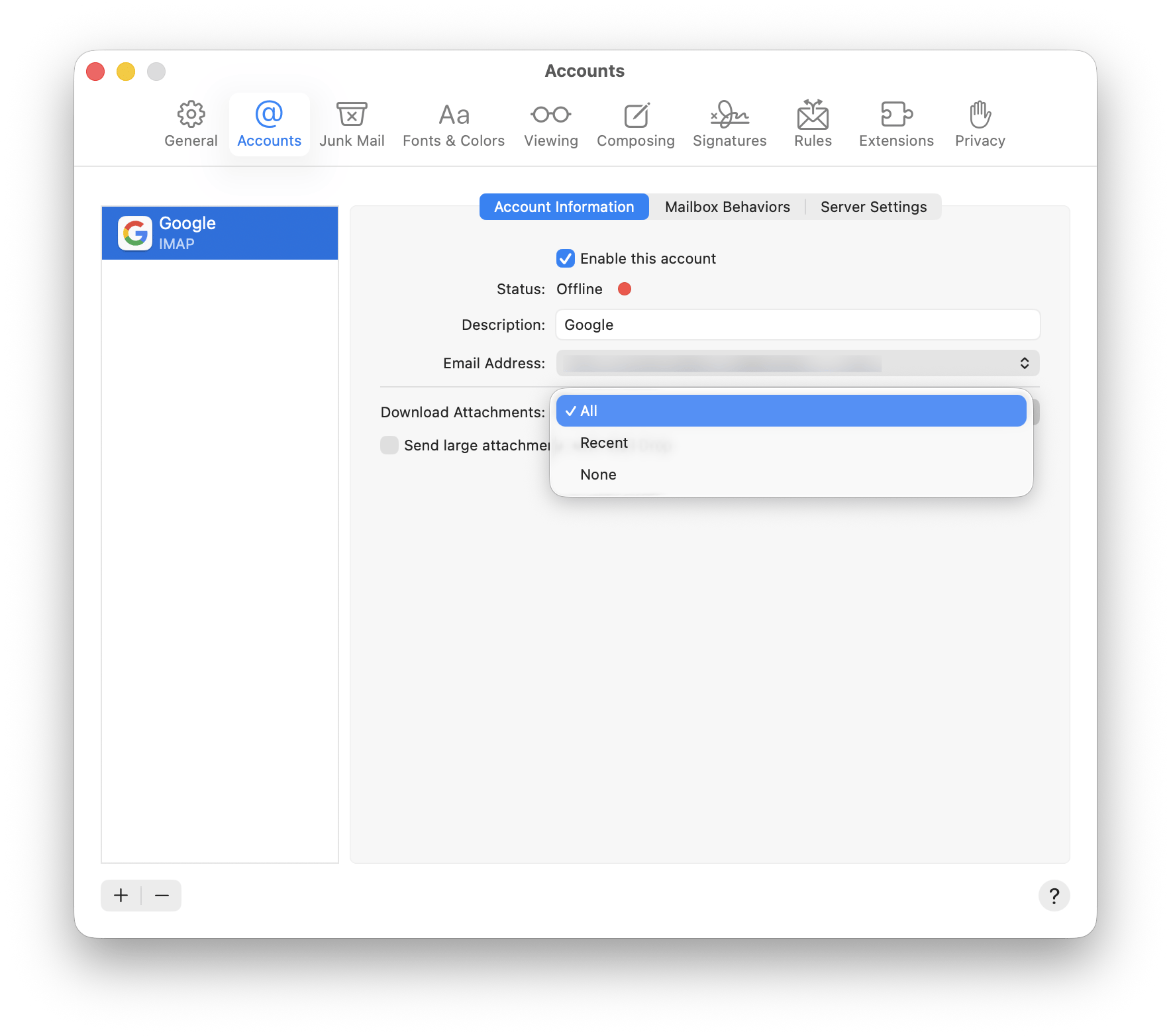
Pick the option that best fits your workflow. If you often work offline, All is convenient. If you’re tight on storage, None or Recent can help reduce clutter and save space.
Unsubscribe from newsletters
If your inbox is overflowing, it might be time for a little cleanup. A tool like Leave Me Alone can help you quickly review all the newsletters you’re subscribed to and decide which ones still deserve a place in your inbox. You can unsubscribe with a single click or group several newsletters into a Rollup and receive them as one digest on a schedule that works for you.
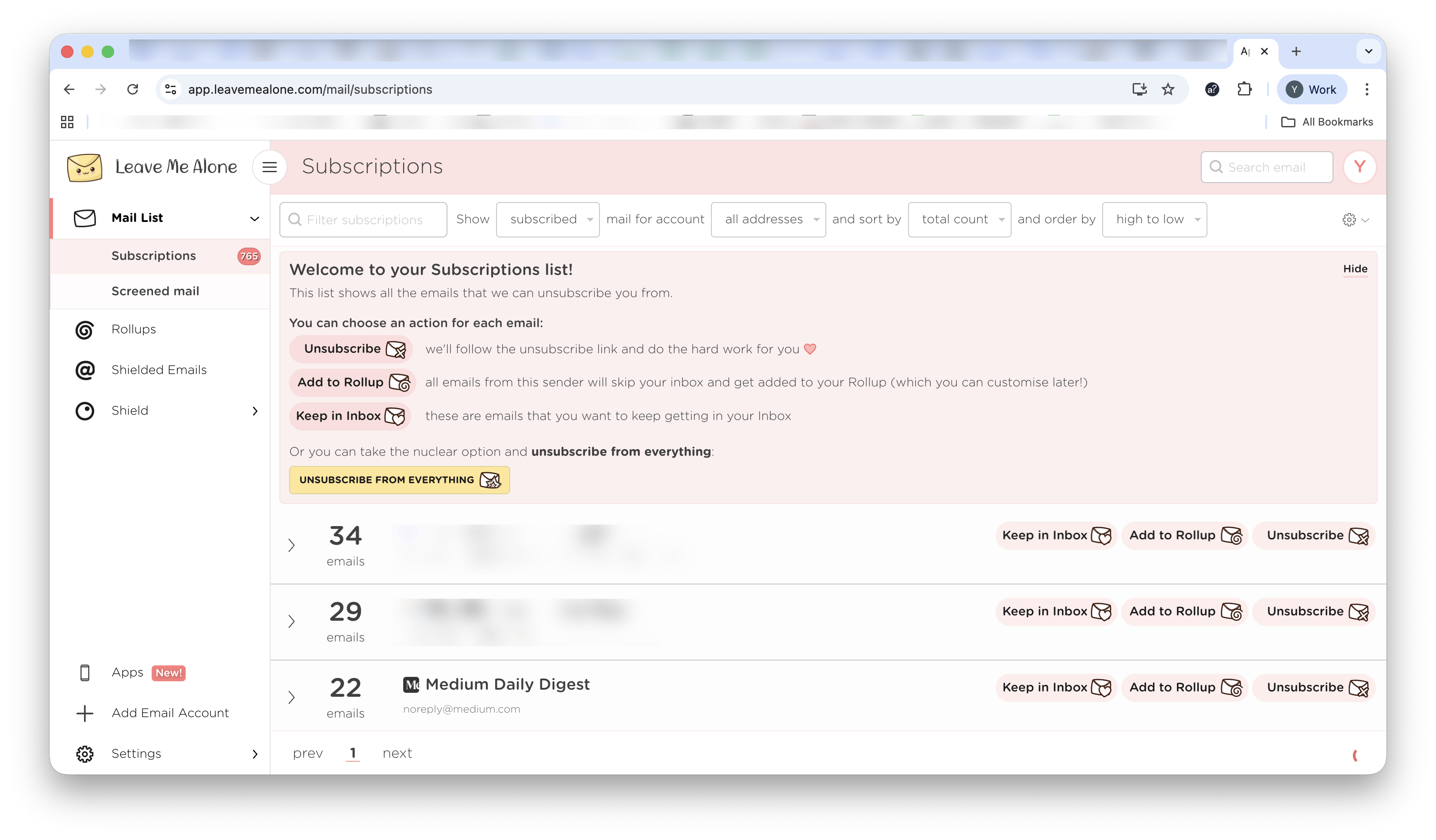
It’s a simple way to lighten your inbox and save time. You can also temporarily pause emails using the app’s Do Not Disturb mode or block unwanted senders — handy for cold emails or persistent spam.
How to remove Mail from Mac and keep your storage under control
It’s surprisingly easy for the Mail Downloads folder to grow huge if you send and receive a lot of emails. That’s why it’s worth checking it every few weeks or months, depending on how you use your Mac. Hopefully, this guide made the process clearer, especially if you’re using tools like CleanMyMac.
CleanMyMac, along with Get Backup Pro, iBoysoft Data Recovery, Sprak Mail, Leave Me Alone, and 260+ other Mac, iOS, and web apps, is available on Setapp. The platform includes a range of helpful tools that speed up your workflow and make everyday tasks easier.
In short, Setapp has something useful for almost any task. You can even ask the Setapp AI Assistant for quick recommendations. All apps are free to try for seven days.
FAQ
How to access the Mail Downloads folder on Mac?
In recent macOS versions, Mail saves attachments in Attachments folders inside ~/Library/Mail/, not a dedicated Mail Downloads folder.
To access:
Open Finder > Go > Go to Folder.
Type ~/Library/Mail/ and press Return
Open the Attachments folders to find your downloaded files.
Where is mail stored on a Mac?
Mail on Mac is stored in the Mail folder inside your Library.
To access it:
Open Finder > Go > Go to Folder.
Type ~/Library/Mail/ and press Return
Here you’ll find all your mail data, including messages and attachments.






